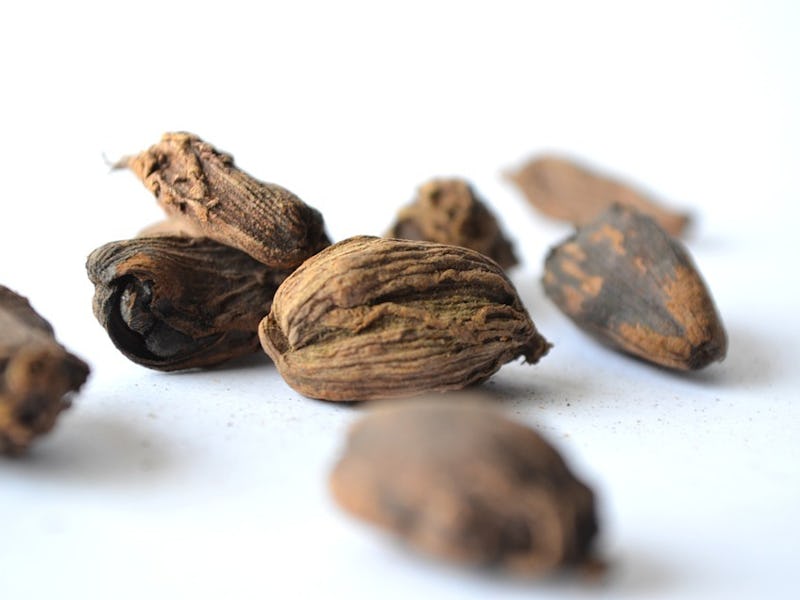How to Get High on the Nutmeg You Bought For Eggnog
The holiday spice can have hallucinogenic effects, but the hangover isn't worth it.

Most people who indulge in holiday eggnog expect to feel a bit of boozy warmth, but few realize that the nutmeg sprinkled on its creamy surface carries its own potent punch. The traditional holiday spice has long been a powerful psychedelic; its festive reputation is more recent.
These days, you’re only likely to have pleasant encounters with nutmeg, whether as a garnish on winter-weather treats, grated into a rich bechamel sauce, or powdered alongside canisters of cocoa and cinnamon at your local Starbucks. It is, indeed, a heady, woody-smelling spice that adds depth to both sweet and savory foods. But history hasn’t always seen it that way.
You won't want to add much more than this.
Prisoners and peasants in 12th-century Europe thought it more of a drug than sensory decoration: Realizing its intense physical side effects — which, in addition to the visual hallucinations and difficulty moving properly, can include up to half a day of vomiting, dizziness, nausea, and seizures — they used it as a last-ditch effort to escape the horrors of imprisonment, induce menstruation in women, or in attempts to abort unwanted fetuses. Despite the horrible hangover, some people were still willing to take it; the alleged French seer Nostradamus, for one, is said to have induced his prophetic visions by ingesting large amounts of nutmeg. Like many modern-day drugs, the benefits appeared to outweigh the costs, and so nutmeg’s reputation as a potent psychotropic drug persisted through the ages.
Its hallucinogenic potency comes down to the effects of a volatile compound contained within its flesh. Nutmeg is a seed pulled from the branches of the evergreen Myristica fragrans tree, native to Indonesia’s Spice (Molucca) Islands. Its aril — the tissue surrounding the seed — is used to make the equally mighty spice mace, commonly found in eye-searing pepper spray. Both nutmeg and mace contain myristicin, which can, in turn, be isolated to help produce more potent psychotropic drugs, like MMDA and its more popular, potentially therapeutic analog MDMA. They also contain the compound safrole, which is a known precursor to MDMA.
Red nutmeg is encased by a white aril, which gives rise to mace.
Eating a hefty dose of nutmeg — a 130-pound Erowid user consumed about 25 grams — will produce potent hallucinogenic effects that last about 12 hours. Following that trip is a deep sleep and subsequent memory impairment of the experience. Then there are the aforementioned side-effects, plus difficulty urinating, dry mouth, and panic.
Eating 25 grams of powdered nutmeg, it should be noted, is extremely difficult. It’s not exactly soluble, and swallowing it is much like trying to choke down sawdust, even when mixed with water or an oilier substance, like ice cream.
Even if you do succeed in choking it down, it isn’t clear that the effects will be worth the trouble. Medical toxicologist Dr. Leon Gussow, who authored a 2011 paper on nutmeg toxicity, has compared the after-effects to a “two-day hangover.”
It’s for these reasons that nutmeg doesn’t come recommended — not even by Erowid — as a “semi-legal high” and hasn’t persisted as an especially common hallucinogen among high-seekers. There are only a handful of nutmeg overdose cases that show up at poison control centers each year. Often, it is teenagers looking for a cheap high, perhaps inspired by stories of famous users like Malcolm X, who once quipped that “a penny matchbox full of nutmeg had the kick of three or four reefers.”
Rest assured, however, that you won’t be likely to feel said kick this holiday season unless you really go hard on the nutmeg and light on the ‘nog. While it may be tempting to do so, there are much less uncomfortable ways of getting into — or out of — the holiday spirit.